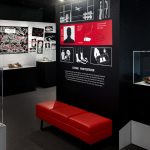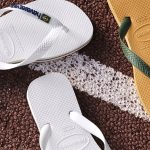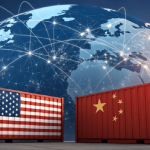By Thomas J. Ryan
French lensmaker Essilor International SA and Luxottica Group SpA, the maker of Ray-Ban and Oakley sunglasses, have agreed a €46 billion ($49 billion) merger to create a global eyewear powerhouse.
The combined company, to be known as EssilorLuxottica, would be the largest player in the eyewear market, manufacturing lenses for prescription glasses and sunglasses, as well as frames. It would have a presence online as well as in stores, with brands including Foster Grant, Oliver Peoples, Persol, LensCrafters, Pearle Vision and Sunglass Hut.
The deal follows more than four years of talks, officials said. The new company would have more than 140,000 employees and sales in more than 150 countries. Based on 2015 results, revenues are forecast to reach more than €15 billion, or about $16 billion, in 2016. It will leave smaller rivals lagging even further behind. Dutch retailer GrandVision and Italy’s Safilo Group had revenues of €3.2 billion and €1.3 billion, respectively, in 2015.
Leonardo Del Vecchio, the 81-year-old Italian billionaire who created Luxottica in 1961 and controls 62 percent of its stock, will be executive chairman and CEO of EssilorLuxottica. Essilor CEO Hubert Sagnieres, 61, will be executive vice chairman and deputy CEO with powers equal to Del Vecchio’s.
“This is a very important moment for our industry, but moreover, a very important moment for all our clients, all our customers and all our employees everywhere in the world, because for the first time, we will bring lenses, frames and distribution under one single roof,” Sagnieres said on a conference call with analysts. “This, as you know, will give vision a strong voice. It will equip our new company extremely well to serve an inspiring purpose, improving vision everywhere in the world by unlocking the bottlenecks of awareness and accessibility.”
Del Vecchio has long talked about creating one company that’s strong in lenses, frames and eyeglass retailing. The deal also solves a succession puzzle for Luxottica, which has had difficulty retaining top management. The company lost three CEOs since 2014 because of rifts with Del Vecchio.
On the call, Del Vecchio noted that the merger comes after two years of reorganizations and strategic refocusing to speed decision making and capitalize on emerging opportunities. He added, “The agreement with Essilor allows us to speed up the implementation of our integrated model, adding the last component to our offer, and doing so with the very best available on the market, namely with brands and products which are already appreciated by our customers.”
Opportunities And Challenges
Based on a preliminary analysis, the combined group is expected to progressively generate revenue and cost synergies ranging from €400 million to €600 million in the medium term and accelerating over the long term. The merger comes at a time of significant growth and change in the global eyewear market, which had a value of about $121 billion last year, according to data from Euromonitor. Aging populations, greater access to health care, awareness of sun-related damage and a rising middle class in emerging markets have led to a surge in sales in eyewear, particularly for branded frames.
Both companies, however, have been grappling with slowing sales growth, hit by weakness in North America, and face rising competition from cheaper rivals and the challenge of online distribution. In the past year, Luxottica saw sales for its Oakley and Ray-Ban brands tumble in North America as it cleaned up its online distribution and enforced stricter minimum-advertised-price (MAP) policies.
On the call, however, Sagnieres believes growth opportunities going forward continue to loom large. He noted that 2.5 billion people need vision correction across the planet, and 5.8 billion need vision protection. In his view, the industry is woefully underdeveloped due to a lack of awareness of poor vision in the world, limited access to advanced lens and frames technology and limits on the number of point of sale points, especially in fast-growing markets.
Said Sagnieres, “In this context, we believe a fully integrated player is essential to create the traction necessary to unlock the underlying growth potential, and we think, Leonardo and I, that the combination between Essilor and Luxottica would be a major step in this direction as it would create an integrated player bringing new business solutions to distributors, consumers alike.”
Sagnieres also believes there’s sizeable room for growth in more developed markets. In the U.S., he noted that a third of lenses in the U.S. lack anti-reflective coatings. He added, “We never cracked the code seriously, and I am so afraid that basically two-thirds of the Americans are looking at their life with big glares on their lenses.”
Half Of The World’s Sunglasses
Beyond Ray-Ban and Oakley, Luxottica makes frames for luxury brands like Armani, Chanel and Prada, and it is the biggest retailer of eyewear in the world through LensCrafters, Pearle Vision and Sunglass Hut. Its largest rivals include Kering, which owns Gucci and Alexander McQueen, and Safilo, which holds the licenses for Dior, Fendi and Céline, brands owned by LVMH Moët Hennessy Louis Vuitton.
The deal, the largest acquisition ever of an Italian company by a foreign buyer, is expected to be able to overcome antitrust hurdles, because its combined revenue would only account for about 16 percent of the market, Del Vecchio said on the call. However, the new company will have more than 50 percent of the sunglasses market and be the largest maker of spectacle frames, lenses and ready-made reading glasses. Another conflict could be in the U.S., where Essilor makes lenses for some Luxottica competitors.
Luxottica has a 14-percent market share in the eyewear market and Essilor a 13-percent share, according to the market research firm Euromonitor International. Johnson & Johnson is the next largest, with a 3.9-percent share. On the call, Sagnieres assured investors that both eyewear retailers as well as clients welcomed the merger. Sagnieres also said Essilor remains committed to selling to optimal independents.
“We are selling our brands, lenses, actually to all the independents and all the chains in the U.S. This will absolutely continue,” said Sagnieres. “When you are an optician somewhere in the U.S., what you want is just the best frames, the best lenses, no hassle; and you want it for in the next minutes, in the next day, very fast. So you will please the consumers, which are pushing the door of your office and want just to see well.”
He added, “By joining forces, this will be much more possible with better product, better quality, a wide range of frames, branded frames, premium brands. And this will be true of course for our alliances like it will be true for all the networks in the U.S. and everywhere in the world.”
Under the terms of the deal, Delfin, the family holding company of the Luxottica founder and executive chairman, Leonardo Del Vecchio, would exchange its 62-percent stake in Luxottica for shares in Essilor, becoming the combined company’s largest shareholder. The company’s 16-member board would consist of eight directors nominated by Essilor and eight nominated by Delfin.
The transaction is expected to close in the second half of the year, but requires regulatory and shareholder approval.
Photo courtesy Oakley
















